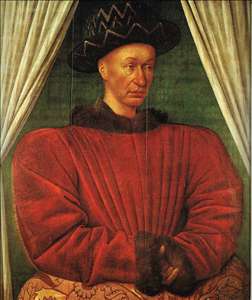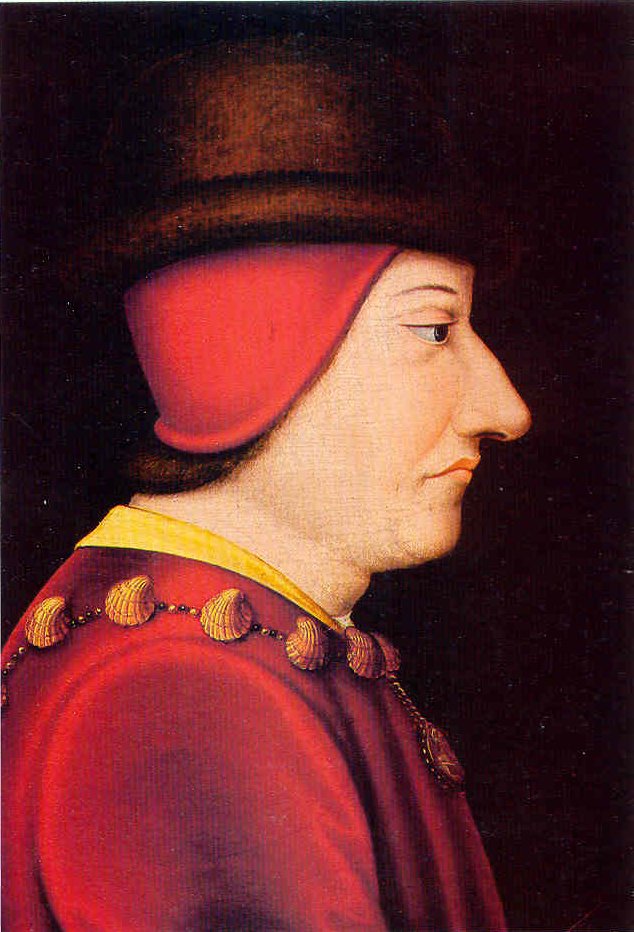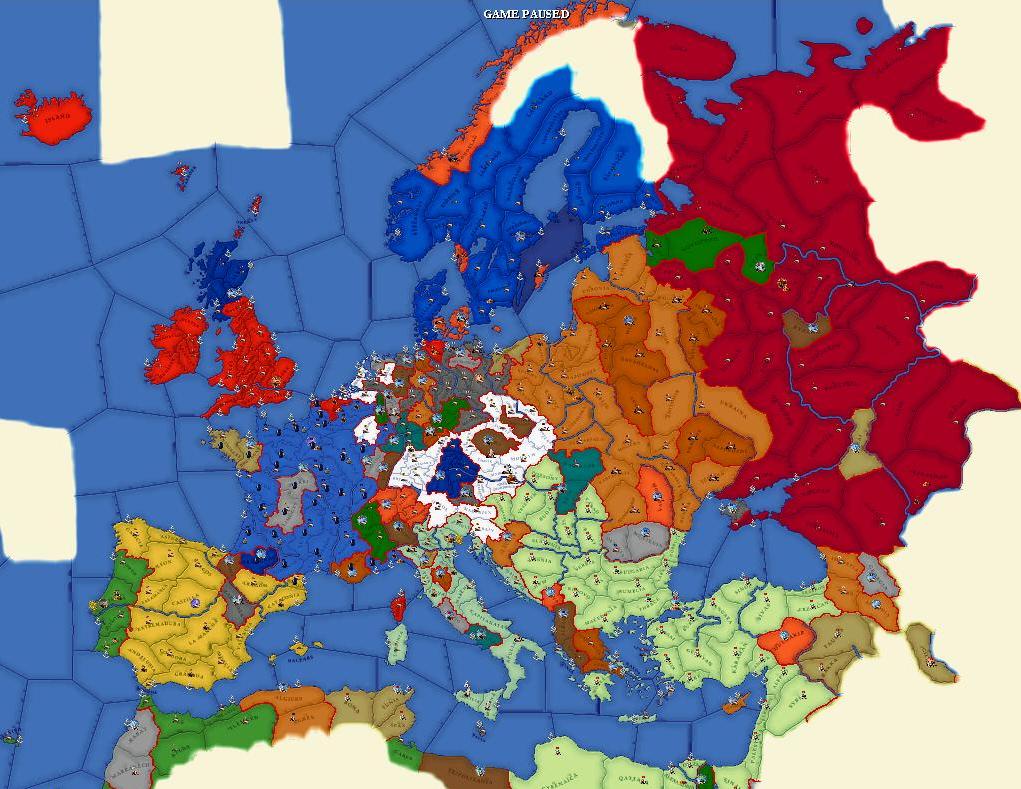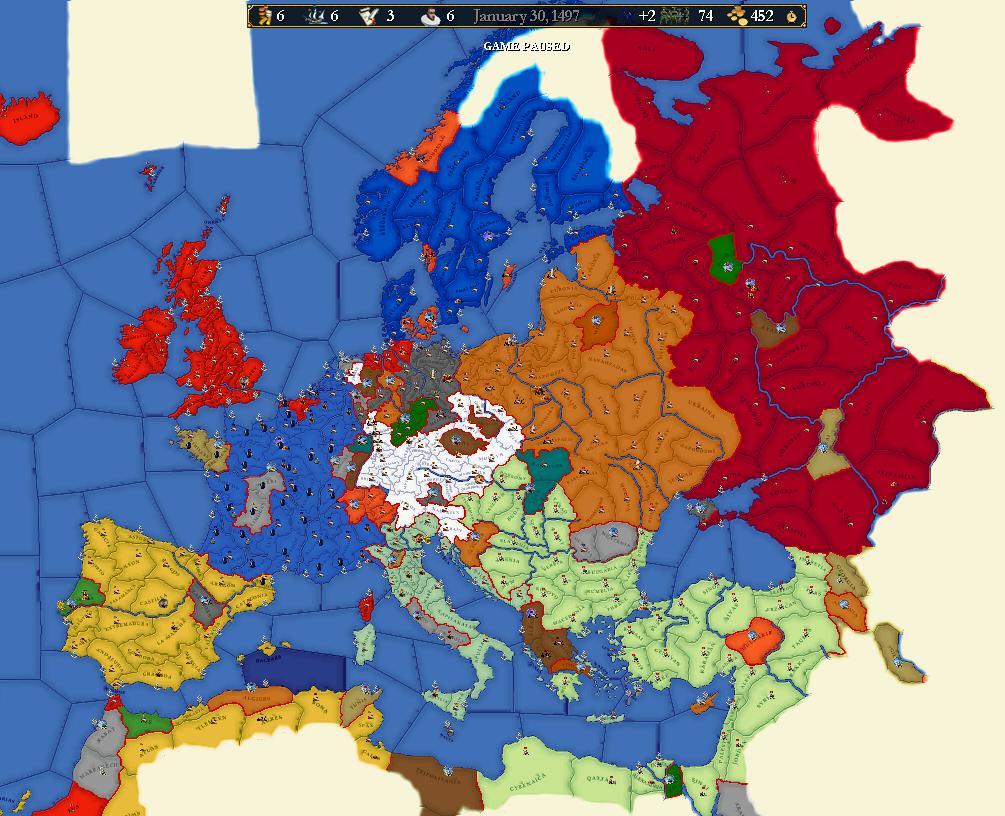France 1453-1481
Reign of Charles VII le Victorieux
As 1453 dawned France stood poised for expansion. The Hundred Years War with the English had ended in a resounding French victory - only Calais still flew the Cross of Saint George, and the Duke of Burgundy was humbled. But Charles VII knew that France was not safe, the Holy Roman Emperor was belligerent, and the English were still dangerous. Charles decided that in order to secure the French homeland, the Kingdom of France must expand, and create a series of buffer-states between itself and the Germans to the east.
Arthur de Richemont, Constable of France, the man who had defeated the hated English was asked to return to the battlefield for the safety of France. The German alliance of Lorraine, Baden, Cologne, Kleves and the Palatinat was invaded. After a two years of campaigning Richemont annexed Bar and Trier, and vassalized Lorraine, Cologne and the Palatinat. In 1457, the electors of the Holy Roman Empire, upset with the Austrian Archduke's inability to protect them, elected Charles VII emperor. Richemont was ordered to Italy to create a buffer state there. Savoy was invaded in 1458, and its armies crushed within months. Richemont, now over 65 caught a chill while campaigning in the Alps. Despite many bleedings, the best Italian and French doctors were unable to save him. Despite the loss of Richemont, the French armies forged ahead, annexing Nice and vassalizing Savoy. Charles VII, who could not even be crowned in Paris when he ascended the throne in 1422, at the time of his death ruled from the Atlantic to the Oder, from the English Channel to the Danube.
Reign of Louis XI l'universelle araignée
Louis XI had a different approach to foreign policy than Charles VII. Charles, had been forced to fight for his own crown and the unity of France, and developed a strong fear of foreign invasion. This lead directly to his policy of creating buffer states. Louis XI was more concerned with expanding French, and more importantly did not inherit his father's burning hatred of everything English. Edward IV, crowned King of England in the same year, realized the French crown was lost and that cooperation with the French could be very profitable. A joint invasion of Genoa was launched in 1463, and despite a valiant three year defense of their city by the Genoese, they were annexed in 1466. Their ally Milan joined the ever growing Confederation of French Vassals the a few months later.
Louis XI now turned his attention inward. The duke of Bourbonnais had annexed the Duchy of Orleans during the reign of Charles VII, and had been building a powerbase in central France. Jean d'Orléans, comte de Dunois, Richemont's protege was sent to put this upstart noble back in his place. Orleans and Bourbon were annexed directly to the French crown and the Confederaion of French Vassals added a new member. Louis turned his attention to expanding the Crown's wineries and vineyards. Unfortunately he lacked the funds to do so, and regular taxation would not be sufficient to raise the sums needed. At the same time, the English King, Edward IV, was thrown into exile. Louis entertained him in Paris and offered to help him restore his throne. Edward IV gladly accepted, so a small mercenary army was assembled, and Edward landed near London to reclaim his throne. Louis used this incident as justification to implement a series of wartaxes which bled the countryside dry, but funded six new refineries. Louis was now content to maintain the status quo in Europe, but the death of Charles the Bold in 1476 would plunge France into war.
Charles the Bold left no male heir, and his daughter was quickly married off to Maximilian I of Austria. Charles VII's greatest fears were coming true - Habsburg expansion to France's very borders. Louis XI acted quickly, enlisting his old friend Edward IV's aid, he invaded the former Burgundian territories. Breda, Brabant, Luxemburg and Hainaut came immediately under French siege, while the English invested Zeeland and Flanders. Unfortunately, the rest of Europe did not realise the threat that Habsburg hegemony posed to them - the Elector of Brandenburg chose to side with the Emperor, while the Doge of Venice, upset over France's control of Genoa saw a perfect opportunity to invade. The Austrian forts began to fall one by one, but the Archduke and Elector were sending reinforcements. The English army under Norfolk was successful in the northern provinces, annihilating two Austrian armies, but Austria and brandenburg launched a joint offensive into Trier, quickly capturing it with a combined 50,000 men. The undermanned and leaderless northern French army was unable to deal with this number of Germans, and retreated to Paris before battle could be joined. Austria recaptured Luxemburg, but Breda, Brabant, Hainaut and Flanders were still under Allied control an Austria began receiving stabhits.
Meanwhile in Italy, Venice had launched an invasion of Savoy, investing Piemonte and Nice. Venice had nearly 100,000 Cavalry in the field while the French army under Crêvecoeur consisted of 35,000 infantry and 25,000 cavalry. Although surrounded, he could defend Genoa itself easily. After a series of false marches towards Piemonte the Venetian forces suffered heavily from attrition. When the Venetians retreated their excess forces to Parma, Crêvecoeur struck. Now only 30,000 Venetian cavalry maintained the siege, with another 50,000 avaliable in for reinforcement. When the battle was joined, Crêvecoeur smashed the Venetians and lifted the siege, just as Venetian reinforcements began to arrive. The reinforcements were butchered piecemeal, leaving nearly 75,000 dead Venetian cavalry to about 20,000 French infantry and negligable cavalry losses (most to attrition - didn't have MA in Savoy). Pisa was placed under siege, but Venice still had 25,000 men in Parma, 12,000 besieging Corsica and an unknown number embarked in their fleet in the Ligurian sea.
On the northern front, England had to retreat most of its army back to England to deal with another civil war, but the French army had nearly liberated Trier. Austrian and Brandenburg were attempting to liberate Hainaut and Brabant, but were unaware that the English army was gone for the time being. They assumed it was embarked, ready to contest any attempt to retake the costal provinces. Once the English rebels were dealt with the stage was set for a final battle. The England landed 30,000 cavalry in Picardie, while the bulk of the French army moved from Trier to Champagne, leaving 6,000 men to complete the siege (and as bait for the 25,000 strong Austrian army in Luxemburg). Austria took the bait, sending 12,000 Cavalry to lift the siege of Trier, while France and England moved towards 25,000 Brandenburgers in Hainaut. Austria only had 12,000 cavalry to aid the Brandenburgers with, and they marched too late to arrive on time. This proved fortuitous as a last minute English missive "Restart movement" was received too late by the French leadership. Movement was restarted, but France was also too late to participate in the battle. By the time France arrive, Norfolk had already annihilated the Brandenburgers. The Austrian reinforcements chose to disengage after a brief skirmish. This was the end of German resistance. Trier was recaptured, Zeeland and Holland taken, and troops rerouted to the south to combat the Italians, who had landed in Languedoc with 8,000 men. These were quickly mopped up, while the Army of Genoa attacked Parma, routing the 30,000 Venetians there. As Louis XI pondered what he wanted to take from Venice, Austria finally caved to Allied demands. Flanders was ceded to England, while Hainaut and Brabant went to France.
Europe 1481
Edits:
-1 inflation
Holland (339) from Austria to France
Zeeland (340) from Austria to France
Breda (1925) from Austria to France
Luxemburg (377) from Austria to France
Gelre (338) from Brandenburg to France







